5-Methyl-2-hexanone
Synonym(s):5-Methyl-2-hexanone;Isobutylacetone;Isopentyl methyl ketone;Methyl isoamyl ketone, Isoamyl methyl ketone;MIAK
- CAS NO.:110-12-3
- Empirical Formula: C7H14O
- Molecular Weight: 114.19
- MDL number: MFCD00008950
- EINECS: 203-737-8
- SAFETY DATA SHEET (SDS)
- Update Date: 2025-09-25 17:15:13
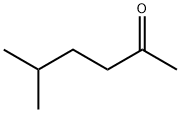
What is 5-Methyl-2-hexanone?
Description
MIAK is a colorless liquid with a pleasant,fruity odor. Molecular weight = 114.21; Specific gravity(H2O:1) 5 0.81; Boiling point = 144℃; Freezing/Meltingpoint 5 2 74℃; Vapor pressure 5 5 mmHg at 20℃; Flashpoint 5 36.1℃ (cc); Autoignition temperature 5 191℃.Explosive limits: LEL 5 1.0% at 93.3℃; UEL 5 8.2% at93.3℃. Hazard Identification (based on NFPA-704 MRating System): Health 1, Flammability 2, Reactivity 0.Slightly soluble in water; solubility 5 0.5%.
Chemical properties
MIAK is a colorless liquid with a pleasant, fruity odor.
The Uses of 5-Methyl-2-hexanone
5-Methyl-2-hexanone may be used to synthesize N,N′-bis(1,4-dimethylpentyl)-p-phenylenediamine (BMPPD) via reductive alkylation of p-nitroaniline in the presence of copper-based catalysts.
What are the applications of Application
Methyl isoamyl ketone (MIAK) is used asa solvent for polymers, cellulose esters, nitrocellulose, cellulose acetatebutyrate, andacrylics, and vinyl copolymers.
Definition
ChEBI: 5-methyl-2-hexanone is a ketone.
Preparation
5-Methyl-2-hexanone is produced by condensation of acetone with isobutyraldehyde. This reaction may be carried out in one or two steps, in the liquid or in the gas phase.
General Description
5-methylhexan-2-one appears as a colorless liquid with a pleasant fruity odor. Less dense than water. Vapors heavier than air. Used as a solvent and for making other chemicals.
Air & Water Reactions
Flammable. Slightly soluble in water.
Reactivity Profile
Ketones, such as 5-Methyl-2-hexanone, are reactive with many acids and bases liberating heat and flammable gases (e.g., H2). The amount of heat may be sufficient to start a fire in the unreacted portion of the ketone. Ketones react with reducing agents such as hydrides, alkali metals, and nitrides to produce flammable gas (H2) and heat. Ketones are incompatible with isocyanates, aldehydes, cyanides, peroxides, and anhydrides. They react violently with aldehydes, HNO3, HNO3 + H2O2, and HClO4.
Hazard
Moderate fire risk. Central nervous systemimpairment and upper respiratory tract irritant.
Health Hazard
Inhalation or contact with material may irritate or burn skin and eyes. Fire may produce irritating, corrosive and/or toxic gases. Vapors may cause dizziness or suffocation. Runoff from fire control may cause pollution.
Health Hazard
Exposure to MIAK can produce a strongnarcotic effect and irritation of the eyes andrespiratory tract. The oral toxicity, however,was found to be low in rats: 1670 mg/kg.
Fire Hazard
HIGHLY FLAMMABLE: Will be easily ignited by heat, sparks or flames. Vapors may form explosive mixtures with air. Vapors may travel to source of ignition and flash back. Most vapors are heavier than air. They will spread along ground and collect in low or confined areas (sewers, basements, tanks). Vapor explosion hazard indoors, outdoors or in sewers. Runoff to sewer may create fire or explosion hazard. Containers may explode when heated. Many liquids are lighter than water.
Safety Profile
Moderately toxic by ingestion and intraperitoneal routes. Mildly toxic by inhalation and skin contact. A flammable liquid when exposed to heat, flame, or oxidzers. To fight fire, use dry chemical, CO2, foam, fog. When heated to decomposition it emits acrid smoke and irritating fumes.
Potential Exposure
MIAK is used as a solvent for cellulose esters, acrylics, and vinyl copolymers.
First aid
If this chemical gets into the eyes, remove anycontact lenses at once and irrigate immediately for at least15 min, occasionally lifting upper and lower lids. Seek medical attention immediately. If this chemical contacts theskin, remove contaminated clothing and wash immediatelywith soap and water. Seek medical attention immediately. Ifthis chemical has been inhaled, remove from exposure,begin rescue breathing (using universal precautions, including resuscitation mask) if breathing has stopped and CPR ifheart action has stopped. Transfer promptly to a medicalfacility. When this chemical has been swallowed, get medical attention. Give large quantities of water and inducevomiting. Do not make an unconscious person vomit.
Storage
Color Code—Red: Flammability Hazard: Store ina flammable liquid storage area or approved cabinet awayfrom ignition sources and corrosive and reactive materials.Prior to working with this chemical you should be trainedon its proper handling and storage. Before entering confinedspace where this chemical may be present, check to makesure that an explosive concentration does not exist. Store intightly closed containers in a cool, well-ventilated areaaway from oxidizers (such as perchlorates, peroxides, permanganates, chlorates, and nitrates), strong oxidizers (suchas chlorine, bromine, and fluorine), reducing agents, andaldehydes. Sources of ignition, such as smoking and openflames, are prohibited where methyl isoamyl ketone is handled, used, or stored. Metal containers involving the transferof 5 gallons or more of methyl isoamyl ketone should begrounded and bonded. Drums must be equipped with selfclosing valves, pressure vacuum bungs, and flame arresters.
Shipping
UN23025-Methylhexan-2-one, Hazard Class: 3; Labels: 3-Flammable liquid.
Incompatibilities
Incompatible with oxidizers (chlorates, nitrates, peroxides, permanganates, perchlorates, chlorine, bromine, fluorine, etc.); contact may cause fires or explosions. Keep away from alkaline materials, strong bases, strong acids, oxoacids, epoxides, nitrated amines, azo, diazo, azido compounds, carbamates, organic cyanates. Attacks some plastics and coatings
Waste Disposal
Dissolve or mix the material with a combustible solvent and burn in a chemical incinerator equipped with an afterburner and scrubber. All federal, state, and local environmental regulations must be observed.
Properties of 5-Methyl-2-hexanone
| Melting point: | -74 °C |
| Boiling point: | 145 °C (lit.) |
| Density | 0.814 g/mL at 25 °C (lit.) |
| vapor density | 3.94 (vs air) |
| vapor pressure | 4.5 mm Hg ( 20 °C) |
| refractive index | n |
| Flash point: | 106 °F |
| storage temp. | Store below +30°C. |
| solubility | water: soluble5.4g/L at 25°C |
| form | Liquid |
| color | Clear colorless |
| Odor | pleasant odor |
| explosive limit | 1.35-8.2%, 93°F |
| Odor Threshold | 0.0021ppm |
| Water Solubility | 5.4 g/L (20 ºC) |
| BRN | 506163 |
| Exposure limits | TLV-TWA 240 mg/m3 (50 ppm) (ACGIH). |
| CAS DataBase Reference | 110-12-3(CAS DataBase Reference) |
| NIST Chemistry Reference | 2-Hexanone, 5-methyl-(110-12-3) |
| EPA Substance Registry System | Methyl isoamyl ketone (110-12-3) |
Safety information for 5-Methyl-2-hexanone
| Signal word | Warning |
| Pictogram(s) |
 Flame Flammables GHS02  Exclamation Mark Irritant GHS07 |
| GHS Hazard Statements |
H226:Flammable liquids H332:Acute toxicity,inhalation |
| Precautionary Statement Codes |
P210:Keep away from heat/sparks/open flames/hot surfaces. — No smoking. P233:Keep container tightly closed. P240:Ground/bond container and receiving equipment. P241:Use explosion-proof electrical/ventilating/lighting/…/equipment. P242:Use only non-sparking tools. |
Computed Descriptors for 5-Methyl-2-hexanone
New Products
Indole Methyl Resin tert-butyl 9-methoxy-3-azaspiro[5.5]undecane-3-carboxylate Boc-His(Boc)-OH 2-CTC Resin 4-Chloro-7-tosy1-7Hpyrrolo[2,3-d]pyrimidine 5,7-Dibromo-1H-indole 2,5-dichloro-N-hydroxy-4,6-dimethylpyridine-3-carboximidamide 2,2-Dimethoxy-7-azaspiro[3.5]nonane hydrochloride 4-chloromethyl-5-methyl-1,3-dioxol-2-one (DMDO-Cl) R-2-BENZYLOXY PROPIONIC ACID 1,1’-CARBONYLDIIMIDAZOLE 1,1’-CARBONYLDI (1,2-4 TRIAZOLE) N-METHYL INDAZOLE-3-CARBOXYLIC ACID 4-((2-hydroxyethyl)thio)benzoic acid 1-(TERT-BUTOXYCARBONYL)-2-PYRROLIDINONE Methyl 6-methylnicotinate 3-Pyridineacrylic acid tert-Butyl carbazate TETRAHYDRO-2H-PYRAN-3-OL 2-((4-morpholinophenylamino) (methylthio) methylene) malononitrile 3-(4-morpholinophenylamino)-5-amino-1H-pyrazole-4-carbonitrile 2,4-dihydroxybenzaldehyde 1,3-Diethyl-1,3-Diphenylurea Methyl 2-methylquinoline-6-carboxylateRelated products of tetrahydrofuran
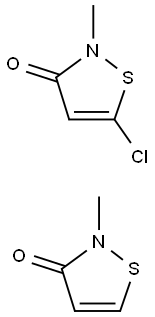
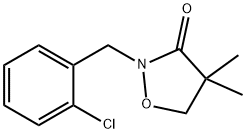


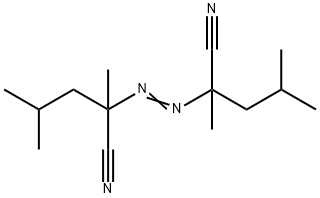
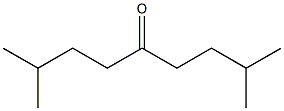
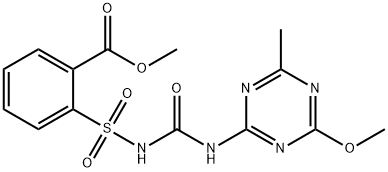

You may like
-
 5-Methyl-2-hexanone CAS 110-12-3View Details
5-Methyl-2-hexanone CAS 110-12-3View Details
110-12-3 -
 Isoamyl Methyl Ketone CAS 110-12-3View Details
Isoamyl Methyl Ketone CAS 110-12-3View Details
110-12-3 -
 5-Methyl-2-hexanone CAS 110-12-3View Details
5-Methyl-2-hexanone CAS 110-12-3View Details
110-12-3 -
 5-Methyl-2-hexanone CAS 110-12-3View Details
5-Methyl-2-hexanone CAS 110-12-3View Details
110-12-3 -
 Pyridine 99.5% HPLC /UV SpectroscopyView Details
Pyridine 99.5% HPLC /UV SpectroscopyView Details
110-86-1 -
 Dibutyl PhthalateView Details
Dibutyl PhthalateView Details
84-74-2 -
 Imidazole Spot supply, competitive priceView Details
Imidazole Spot supply, competitive priceView Details
288-32-4 -
 Thiourea 99% ARView Details
Thiourea 99% ARView Details
62-56-6
